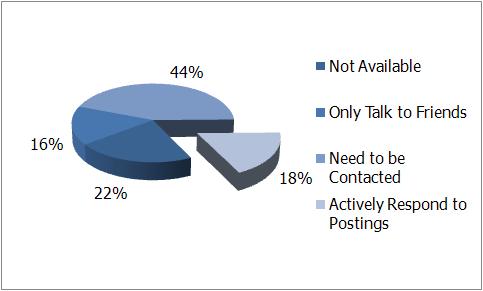We humans tend to confuse scarcity with value. We tend to overvalue what is difficult, and undervalue what comes easily. We overvalue what we don’t have and undervalue what we do have. You hear the mental confusion when a recruiter puffs up his chest and intones, “Good people don’t answer job ads.”
The recruiter is trying to build up the perceived value of the difficult work of reaching people who do not answer ads, and diminish the value of what comes easily (people who answer ads). But c’mon, the phrase just sounds ridiculous. Of course good people answer job ads.
Recruiters don’t actually believe that the very act of answering a job ad degrades a candidate’s skills in some way, while remaining unresponsive to advertising makes them better at their job. Obviously someone’s ability to perform on the job is wholly unrelated to how you recruited them. In our executive search work, we’ve found good people who answered job ads, social media outreach, cold calls, and emails. We haven’t tried it, but I’d bet that we could walk around wearing sandwich boards and some good people would respond (if the messaging on the sign was good enough).
So what’s the real problem with job advertising?
The problem is that good people rarely respond in large enough numbers to teach you anything useful about your job market. And there’s the rub. We’ve looked very closely at the engagement rate of good people to job advertising, and in our experience, it hovers around 1-3% of the total candidate pool. Don’t get me wrong; there are some fine people in that little number. (But I should also mention that our ratio of “on target” to “off target” resumes is about 1:30, so it takes a bit of reading to find the good ones.)
But if you want to hire a top performer (often defined as one of the top 10% of people with that skill in the market) and your job advertising only engages 1-3% of the best people in the market, how do you know when the candidate sitting in front of you is one of the best? All you really know is that they are one of the best people who happened to see your ad. You simply lack the context to know how they compare to their peer group.
How do you decide whether or not to hire them?
And that’s the most vexing conundrum of staffing for most hiring managers. The hiring manager always wants to hire one of the best possible people in the job market, but lacks the context to understand if the candidate sitting in front of him is one of the best. It’s vexing because in order to properly evaluate the handful of good people who answered your job ad, you need to understand the entire job market. But only a small fraction of the entire job market will ever answer your job ad, and, by definition, only a tenth of them are in the top ten percent. Without a sophisticated candidate research capability, you are flying blind.
While hiring managers can easily define the skills they would like to see in a position, they rarely know how the job they defined compares to the skills of the people in their job market. Supply and demand for skills varies wildly by position, by city, and by time-frame. It’s fairly common to define a job in a way that makes it unfillable, or undesirable, or that requires someone you cannot possibly afford. How will your recruiting process catch the error?
Can your recruiting process answer questions like these?
- How many people in Washington work in finance for a nonprofit with a budget over $50 million?
- What do their salaries and career paths look like?
- How many would be interested in the position you have open?
- How do their titles compare to your internal title?
- How will small changes in your title, or responsibilities, or experience requirements change your recruiting outcomes?
Without this data, you can’t make an intelligent comparison between your open job and the supply of people. And you cannot get to the next level questions like:
- How does your job stack up against other places your candidate might want to work?
- How does your compensation compare to their other options?
- Should you hire the person in front of you or hold out for someone better?
And that’s the real problem with job advertising, social recruiting, or any recruiting approach that only yields a few good people. You may be missing the people you really want to reach, and you may get a few good people, but you have no idea what to do with them.
Ultimately, very little of what is written in either the job description or the resume helps either party understand each other, or helps to predict who will be successful on the job. In this very first step of the hiring process — posting a job ad and reviewing resumes — there is already a frustrating breakdown in communication.
To learn how to write more effective job postings, read How to Write Job Descriptions that Attract Top Performers. Or, if you prefer your research and information to be more attractively formatted, just download the document below.
Disclaimer: This advice is primarily for professional hiring in a large metropolitan area. Our perspective is shaped by our work in a retained executive search firm, conducting searches for CEO and senior staff positions. We’ve completed over 600 searches for associations and other nonprofits in major metropolitan areas like Washington DC, New York, and Chicago, but not all of our advice will be relevant if you are interviewing for other types of positions in other job markets.
